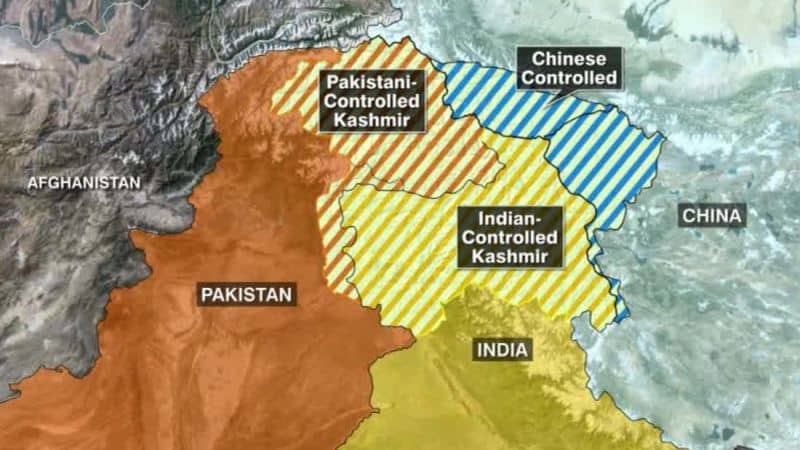Here’s a look at what you need to know about the Camp David Accords. On September 17, 1978, Egyptian President Anwar Sadat, Israeli Prime Minister Menachem Begin and US President Jimmy Carter

Here’s a look at what you need to know about the Oslo Accords, a series of agreements between Israel and the Palestinians signed in the 1990s.
Oslo I is formally known as the Declaration of Principles (DOP). The pact established a timetable for the Middle East peace process. It planned for an interim Palestinian government in Gaza and Jericho in the West Bank.
After the signing, Israeli Prime Minister Yitzhak Rabin and Palestinian leader Yasser Arafat shook hands.
The United States was not actively involved in the negotiations.
The meetings were carried out in secret over several months in 1992 and 1993.
Oslo II, officially called the Israeli-Palestinian Interim Agreement on the West Bank and Gaza, expanded on Oslo I. It included provisions for the complete withdrawal of Israeli troops from six West Bank cities and about 450 towns. Additionally, the pact set a timetable for elections for the Palestinian Legislative Council.
April 1992 – Terje Rod-Larsen, head of a Norwegian research institute, suggests to Israeli politician Yossi Beilin that Norway act as an intermediary between Israel and the PLO.
September 10, 1992 – At a secret meeting in Tel Aviv, Israel, Norwegian State Secretary Jan Egeland formally offers his country’s help.
December 1992 to April 1993 – Fourteen meetings are held, in London and Norway, between Professor Yair Hirschfeld and Ahmed Qorei, of the PLO.
April 1993 – After several months, Qorei insists on meeting with someone officially representing Israel’s government. Israeli Foreign Ministry Director General Uri Savir takes over for Hirschfeld. Qorei and Savir meet 11 more times between April and August.
August 19, 1993 – Israeli Foreign Minister Shimon Peres secretly flies to Oslo, Norway, and meets with Qorei. He witnesses the signing of the agreement between Savir and Qorei.
September 10, 1993 – The PLO reaffirms its recognition of Israel’s right to exist, and in turn, Israel recognizes the PLO as the sole representative of the Palestinian people.
September 10, 1993 – US President Bill Clinton announces a resumption of talks between the United States and the PLO. This clears the way for Arafat to travel to the United States.
September 13, 1993 – The Oslo Accords (referred to as Oslo I at this point) are signed by Peres and Mahmoud Abbas, and witnessed by Rabin and Arafat, in Washington, DC.
October 1994 – Arafat, Peres and Rabin are awarded the Nobel Peace prize.
September 28, 1995 – A second significant agreement is signed in Washington, DC. This agreement is often referred to as Oslo II.
November 4, 1995 – Rabin is assassinated at a peace rally.
July 25, 2000 – Clinton’s efforts to achieve a final status agreement between Israelis and Palestinians end in failure at Camp David. Both sides blame each other for intransigence, though there is a shared sense that none of the parties were properly prepared.
September 28, 2000 – Clashes erupt between Israeli forces and Palestinians following a visit by Israeli opposition leader Ariel Sharon to Jerusalem’s most important holy site, sacred to both Muslims and Jews. The violence escalates to include waves of suicide bombings and becomes known as the Second Intifada, or uprising.
November 11, 2004 – Arafat dies in Paris.
September 30, 2015 – Abbas accuses Israel of not committing to the Oslo Accords and declares that Palestinians “cannot continue to be bound by these agreements.”
September 28, 2016 – Peres dies at the Sheba Medical Center in Tel Aviv after suffering a massive stroke two weeks prior.
January 14, 2018 – Abbas calls on the PLO to “revise all the agreements signed between the PLO and Israel because Israel has brought these agreements to a dead end,” and accuses Israel of ending the Oslo agreement. This criticism comes six weeks after US President Donald Trump announces that Washington recognizes Jerusalem as Israel’s capital.
The Declaration calls for:
– Israel to withdraw from Jericho and Gaza, and eventually the West Bank.
– Five years of limited autonomy for Palestinians in those areas.
– Election of Palestinian Legislative Council within nine months.
– Establishment of a Palestinian police force.
– The question of Jerusalem was left undecided.
Don't Miss
CNN — Here’s a look at the life of former Brazilian President Dilma Rousseff. Birth date: December 14, 1947 Birth
CNN — Here’s a look at the life of retired professional soccer player David Beckham. Birth date: May 2, 1975
CNN — Here’s a look at Kashmir, a region in the Himalayan and Karakoram mountain ranges. India, Pakistan and China

Here’s a look at what you need to know about the Camp David Accords.
On September 17, 1978, Egyptian President Anwar Sadat, Israeli Prime Minister Menachem Begin and US President Jimmy Carter signed the Camp David Accords in Washington.
Called for a formal peace treaty to be signed between Israel and Egypt, within three months.
Called for establishment of diplomatic relations between the two countries.
Called for Israeli withdrawal from the Sinai Peninsula in stages, to be completed within three years.
Called for further meetings to resolve the Palestinian question. The meeting would include Jordan and a representative of the Palestinian people.
Called for a five-year transitional period of Israeli withdrawal from the West Bank and Gaza. This transitional period would include the introduction of Palestinian self-government.
Called for an end to Israeli settlements in the West Bank.
Did not settle the question of East Jerusalem.
November 9, 1977 – Sadat announces that he is “ready to go to the Israeli parliament itself” to resolve the conflict in the Middle East. This is despite the fact that the two countries do not have diplomatic relations and are technically still at war.
November 15, 1977 – Through the United States, Israel formally extends an invitation to Sadat to visit the country.
November 19-21, 1977 – Sadat makes a historic first visit by an Arab head of state to Israel. During the three-day visit, Sadat meets with Begin, addresses the Knesset, and lays a wreath at a monument to Israeli war dead.
December 2-5, 1977 – Representatives from Syria, Iraq, Libya, Algeria, South Yemen and the Palestine Liberation Organization meet in Libya to discuss ways of stopping the Israeli-Egyptian peace process.
December 5, 1977 – Egypt cuts diplomatic ties with Syria, Iraq, Libya, Algeria and South Yemen.
December 14, 1977 – Egypt hosts Israel, the US and the United Nations at a peace summit in Cairo.
December 25-26, 1977 – Sadat hosts Begin at a summit in Ismailia, Egypt.
September 6, 1978 – The peace summit begins in Camp David, Maryland. After meeting formally on the first day of the 13-day summit, Sadat and Begin do not meet again during the negotiations. Instead, Carter acts as a go-between.
September 19, 1978 – The Egyptian Cabinet approves the agreement.
September 28, 1978 – The Israeli Knesset approves the agreement.
November 1978 – PLO leader Yasser Arafat travels to Moscow to discuss organized opposition to the agreement. The PLO and the Soviet Union release a statement describing the accords as “a collusion at the expense of and behind the backs of the Arabs aimed at helping Israel entrench [itself] on captured Arab land, including Palestine, and prevent implementation of the Palestinians’ inalienable national rights.”
March 26, 1979 – In a ceremony in Washington, Egypt and Israel formally sign a peace treaty ending 31 years of war between them.
Don't Miss
CNN — Here’s a look at the life of former Brazilian President Dilma Rousseff. Birth date: December 14, 1947 Birth
CNN — Here’s a look at the life of retired professional soccer player David Beckham. Birth date: May 2, 1975
CNN — Here’s a look at Kashmir, a region in the Himalayan and Karakoram mountain ranges. India, Pakistan and China







